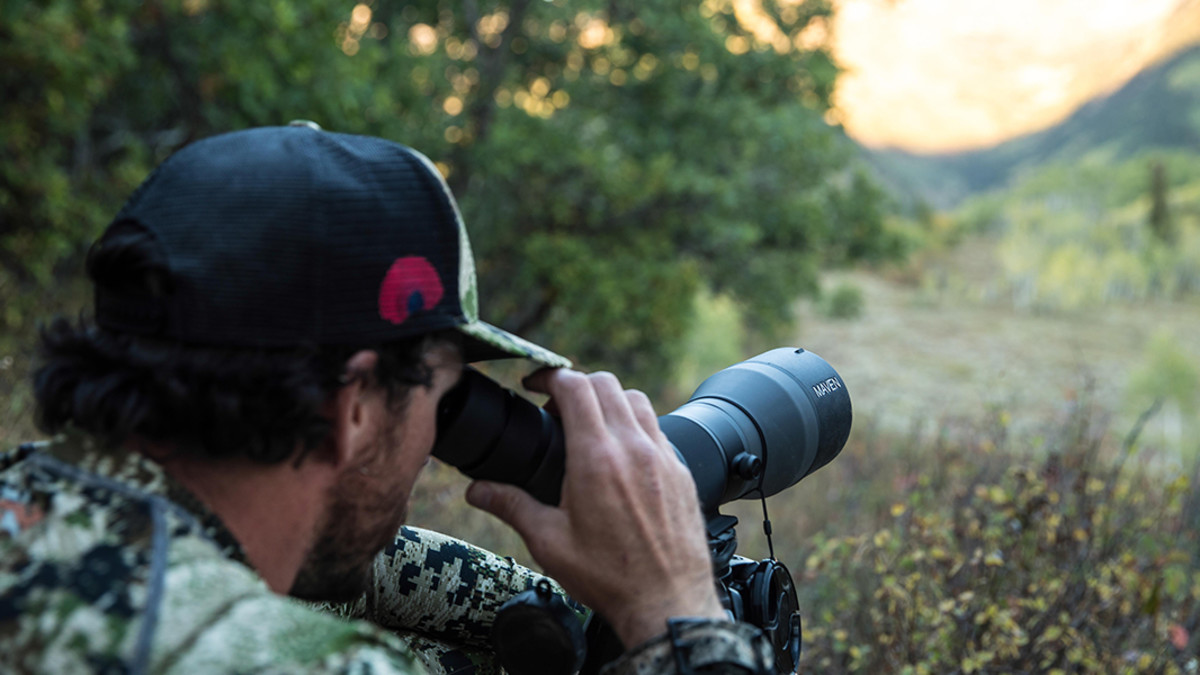
Spotting scopes are vital for hunting open country where they have several important functions.
When I’m glassing big spaces with my 10x binoculars, I’ll make a mental note of any areas that I couldn’t quite pick apart to my satisfaction. These might include thick patches of cover, shaded areas beneath rocky overhangs or downed trees, or just interesting shapes that are hard to discern with my binoculars.
When I’m done with my initial scan, I’ll bust out my spotter and give these areas a careful, up-close examination. The second great benefit of having a spotting scope is that you can analyze critters that you’ve already located. This is especially important when you’re dealing with legal size and sex restrictions.
When I’m hunting for does, either at the request of a landowner who doesn’t want to kill his young bucks or because I have an antlerless-only deer tag, I use my spotting scopes to make sure that I’m not mistaking a small spike horn buck for a doe. When it comes to hunting mountain sheep and moose, a spotter is great for determining whether or not an animal is of legal size.
In much of the West, bighorn sheep need to reach ¾ curl size in order to be legal. In Alaska, moose usually need to have either 3 or 4 brow tines , or a 50-inch overall spread to be legal. In these situations, you want all the eye-power you can get. The difference between having a spotting scope or not can be the difference between having a dead animal or going home empty-handed.
When selecting a spotting scope, you should weigh your concerns about image quality against your concerns about portability. If you’re strictly a long-range backpack hunter who humps into the Brooks Range, get a spotting scope that weighs around two or three pounds with an objective lens not greater than 60mm and variable magnification of approximately 10x-30x.
If you’re a truck hunter who prowls the wide-open expanses of the Texas Panhandle, an 85mm scope weighing seven pounds with variable magnification of 20x – 60 x will suit you just fine. If you’re looking for a single scope that can do it all, it’s hard to beat a 65mm spotting scope with variable magnification of about 15x – 45 x. In truth, most spotting scopes, even the highest quality ones, have a distorted image at their highest magnification settings.
Feature image by Matt Jones Photography.





Conversation